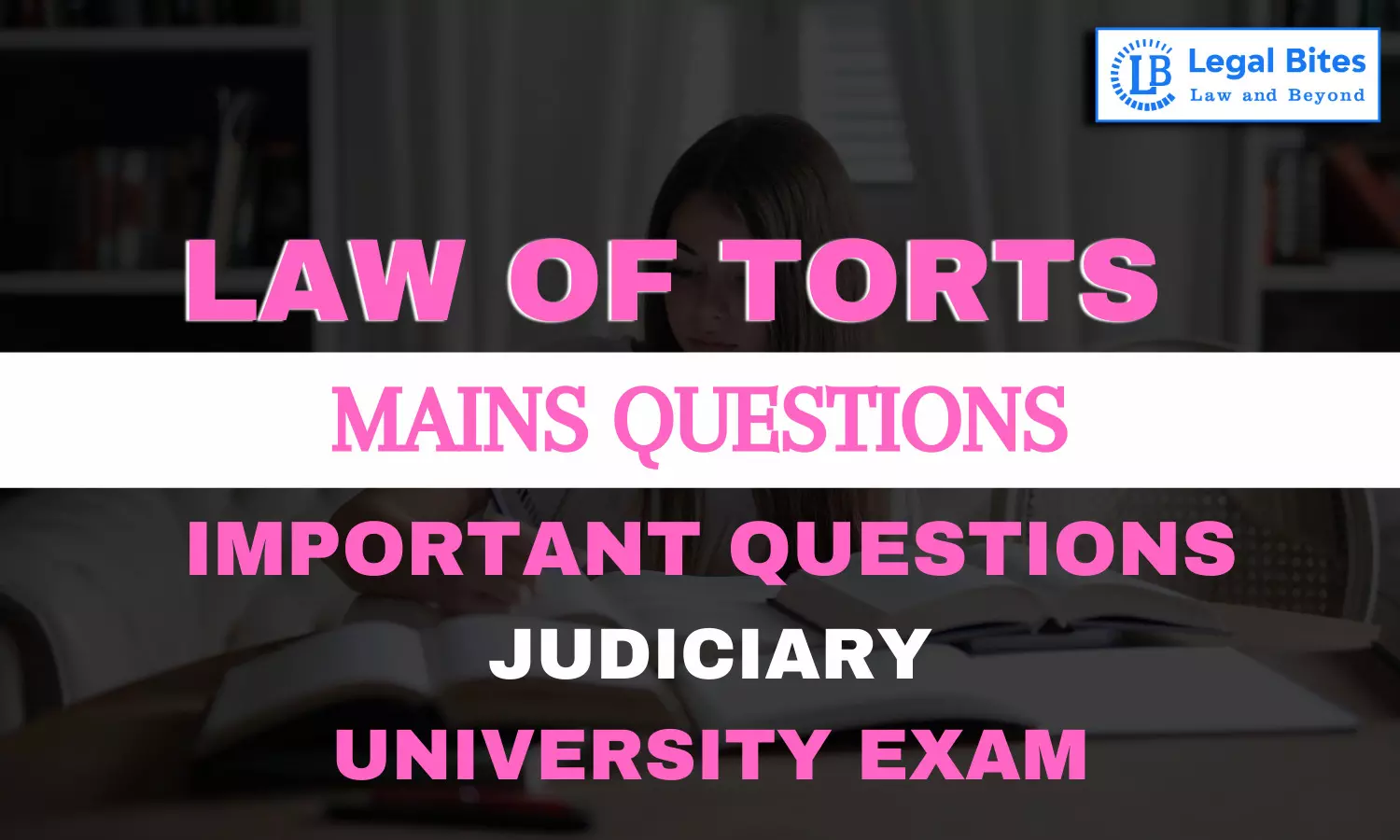A asks for a lift from a motorist B. A is told by B - "I am not an expert driver. I am without a driving licence too. You may travel at your own risk." A travels with B. Later, the motor vehicle collides with a bus due to defective breaks of B's vehicle. A sues B for injuries suffered by him in the accident. B takes the plea of 'volenti non fit injuria'. Decide, after discussing the whole law relating to the aforesaid maxim.
Find the question and answer of Law of Torts only on Legal Bites.

Question: A asks for a lift from a motorist B. A is told by B - "I am not an expert driver. I am without a driving licence too. You may travel at your own risk." A travels with B. Later, the motor vehicle collides with a bus due to defective breaks of B's vehicle. A sues B for injuries suffered by him in the accident. B takes the plea of 'volenti non fit injuria'. Decide, after discussing the whole law relating to the aforesaid maxim. [BJS 2021]Find the question and answer of Law of Torts...
Question: A asks for a lift from a motorist B. A is told by B - "I am not an expert driver. I am without a driving licence too. You may travel at your own risk." A travels with B. Later, the motor vehicle collides with a bus due to defective breaks of B's vehicle. A sues B for injuries suffered by him in the accident. B takes the plea of 'volenti non fit injuria'. Decide, after discussing the whole law relating to the aforesaid maxim. [BJS 2021]
Find the question and answer of Law of Torts only on Legal Bites. [A asks for a lift from a motorist B. A is told by B - "I am not an expert driver. I am without a driving licence too. You may travel at your own risk." A travels with B. Later, the motor vehicle collides with a bus due to defective breaks of B's vehicle. A sues B for injuries suffered by him in the accident. B takes the plea of 'volenti non fit injuria'. Decide, after discussing the whole law relating to the aforesaid maxim.]
Answer
The maxim of 'volenti non fit injuria' means that a person who voluntarily and with full knowledge of the danger, exposes himself to it, cannot complain against the harm caused to him. This maxim is based on the principle of personal responsibility and free choice. It is often used as a defence in tort law to relieve the defendant of liability for harm caused to the plaintiff.
However, the defence of 'volenti non fit injuria' is not an absolute defence. In order for the defence to succeed, the following conditions must be fulfilled:
- The Plaintiff must have had full knowledge of the risk involved in the act or activity which caused the injury.
- The Plaintiff must have voluntarily accepted the risk.
- The Acceptance of the risk must have been made with free consent.
In the given case, A had full knowledge of the fact that B was not an expert driver and was without a driving licence. Despite this knowledge, A voluntarily travelled with B. However, it can be argued that A did not voluntarily accept the risk as he had no other option for transportation and had to take a lift from B. Moreover, A did not give free consent as he was not aware of the defective breaks of B's vehicle, which ultimately led to the accident.
The defence of 'volenti non fit injuria' has been applied in several cases in India. One such case is Bishan Devi v. Sirbaksh Singh, (AIR 1966 SC 220), where the Supreme Court held that the defence of 'volenti non fit injuria' is available only if the plaintiff had full knowledge of the nature and extent of the danger involved and voluntarily exposed himself to it. In the absence of either of these two elements, the defence cannot be invoked.
Another case where the defence was considered is Poonam Verma v. Ashwin Patel, (1996) 4 SCC 332. In this case, the plaintiff, who was a passenger in a car, was injured in an accident caused by the driver's negligence. The defendant driver relied on the defence of 'volenti non fit injuria' on the grounds that the plaintiff had voluntarily got into the car knowing that the driver was drunk. The court held that the defence could not be applied as the plaintiff did not have full knowledge of the extent of the danger involved and had not voluntarily accepted the risk.
In light of these cases, it can be argued that the defence of 'volenti non fit injuria' cannot be applied in the present case as A did not voluntarily accept the risk and did not have full knowledge of the danger involved. Moreover, the fact that B had defective breaks in his vehicle was not communicated to A. Therefore, B cannot escape liability for the injuries suffered by A in the accident.
The defence of 'volenti non fit injuria' is not an absolute defence in tort law. In order for the defence to succeed, the plaintiff must have had full knowledge of the risk involved in the act or activity which caused the injury, voluntarily accepted the risk and given free consent. In the present case, A did not voluntarily accept the risk and did not have full knowledge of the danger involved. Therefore, B cannot rely on the defence of 'volenti non fit injuria' and cannot escape liability for the injuries suffered by A in the accident.

Mayank Shekhar
Mayank is an alumnus of the prestigious Faculty of Law, Delhi University. Under his leadership, Legal Bites has been researching and developing resources through blogging, educational resources, competitions, and seminars.
